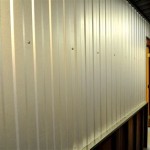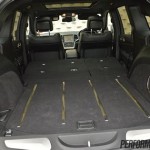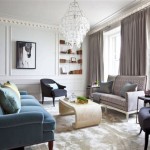How To Lighten Up A Log Cabin Interior Design
Log cabins evoke a sense of rustic charm and connection to nature. However, their inherent characteristics, such as dark wood walls and limited natural light, can create an interior that feels heavy and even gloomy. Overcoming this challenge requires a strategic approach that focuses on maximizing light reflection, incorporating lighter color palettes, and thoughtfully integrating design elements that promote brightness and airiness. This article explores practical methods for lightening up a log cabin interior without sacrificing its inherent character.
Optimizing Natural Light
The most fundamental step in lightening a log cabin is maximizing the available natural light. This involves critically assessing existing windows and exploring avenues for increasing their size or number. Consider the orientation of the cabin and the sun's path throughout the day. South-facing windows will provide the most direct sunlight, while east-facing windows capture morning light, and west-facing windows offer afternoon sun. North-facing windows provide diffused, cooler light.
Window treatments play a crucial role in controlling and optimizing light. Heavy drapes or curtains, while seemingly appropriate for a cabin aesthetic, can significantly impede natural light. Opt for lighter, more translucent materials such as sheer curtains, Roman shades made of linen or cotton, or woven blinds. These options allow light to filter through while still providing privacy and some level of insulation. Blinds and shades offer flexibility, allowing for adjustments based on the time of day and desired level of illumination.
Beyond window treatments, consider the surrounding landscape. Overhanging trees or shrubs can block significant amounts of sunlight. Strategic trimming of vegetation can dramatically increase the amount of light entering the cabin. Reflective surfaces outside the windows, such as a light-colored deck or patio, can also bounce more light into the interior.
If feasible, consider adding skylights or roof windows. These architectural elements can introduce a significant amount of natural light to spaces that are otherwise deprived, particularly in areas with high ceilings or limited wall space for windows. Skylights are especially effective in kitchens, bathrooms, and hallways.
Another consideration is the cleanliness of the windows themselves. Regularly cleaning windows, both inside and out, is a simple yet effective way to maximize light transmission. Accumulated dirt and grime can significantly reduce the amount of light that enters the cabin.
Employing a Light Color Palette
The choice of color palette is paramount in lightening up a log cabin. Dark, saturated colors absorb light, while light, neutral tones reflect it. The goal is to create a visual sense of spaciousness and airiness. This does not necessarily mean abandoning the rustic aesthetic entirely; rather, it involves strategically incorporating lighter hues to balance the darkness of the logs.
White and off-white are excellent choices for walls and ceilings. These colors reflect the most light and visually expand the space. Different shades of white, such as ivory, cream, or antique white, can add warmth and prevent the interior from feeling sterile. Light grays, beiges, and soft pastels are also viable options, providing a subtle touch of color while maintaining a bright and airy feel.
When painting log walls, consider using a limewash or whitewash finish. These treatments allow the natural texture and grain of the wood to show through while lightening its overall appearance. They create a softer, more diffused effect than solid paint, preserving the character of the logs while brightening the interior.
The choice of flooring also impacts the overall lightness of the cabin. Dark wood floors can contribute to a feeling of heaviness. Consider lighter wood species, such as maple or birch, or opt for engineered wood flooring with a light finish. Alternatively, lighter-colored rugs can be used to break up the expanse of dark flooring and add visual interest.
Furniture and accessories should also be chosen with a light color palette in mind. Upholstered furniture in light fabrics, such as linen, cotton, or velvet, can brighten the space. Light-colored throw pillows and blankets can add pops of color and texture without overwhelming the room. Artwork with light backgrounds and frames can also contribute to the overall brightness of the interior.
Strategic Use of Artificial Lighting
While maximizing natural light is essential, artificial lighting plays a crucial role in illuminating a log cabin, especially during evening hours and in areas with limited natural light. A well-designed lighting scheme should incorporate a variety of light sources to create a balanced and layered effect.
Overhead lighting, such as recessed lighting or pendant lights, provides general illumination. Recessed lighting is a discreet option that minimizes visual clutter and provides a clean, modern look. Pendant lights can add a decorative element and provide focused light over specific areas, such as a dining table or kitchen island. Choose fixtures with light-colored shades or glass diffusers to maximize light output.
Task lighting is essential for specific activities, such as reading, cooking, or working. Table lamps and floor lamps can provide targeted illumination in living areas and bedrooms. Under-cabinet lighting in the kitchen can illuminate countertops and work surfaces. Adjustable task lights allow for customized illumination based on individual needs.
Accent lighting is used to highlight architectural features, artwork, or decorative objects. Track lighting or spotlights can be used to showcase artwork or architectural details. Uplighting can create a dramatic effect by illuminating walls or ceilings. Accent lighting adds depth and dimension to the interior, creating a more visually interesting and inviting space.
The type of light bulbs used is also an important consideration. LED bulbs are energy-efficient and long-lasting, and they are available in a range of color temperatures. Warm white light (2700-3000K) creates a cozy and inviting atmosphere, while cool white light (3500-4100K) provides a brighter and more energizing effect. Choose light bulbs that are appropriate for the specific function of each light fixture.
Consider incorporating dimmer switches to control the intensity of the lighting. Dimmer switches allow for adjusting the light level based on the time of day and desired mood. They can also help to conserve energy and extend the lifespan of light bulbs.
Incorporating Reflective Surfaces
Reflective surfaces play a vital role in bouncing light around the cabin and creating a brighter, more spacious feel. Mirrors are particularly effective at amplifying light and visually expanding a room. Strategically placed mirrors can reflect natural light from windows and artificial light from light fixtures, illuminating dark corners and creating a sense of depth.
Large mirrors, such as those placed on walls or used as full-length dressing mirrors, can have a dramatic impact on the perceived size of a room. Smaller mirrors, such as decorative mirrors or mirrored trays, can also contribute to the overall brightness of the space.
Glass and metallic surfaces also reflect light and can add a touch of elegance to the cabin interior. Glass-topped tables, glass shelving, and metallic accents, such as copper or brass, can bounce light around the room and create a sense of openness.
Consider using glossy paint finishes on trim and doors to reflect light. Semi-gloss or high-gloss paint finishes are more reflective than matte finishes and can help to brighten up dark areas.
Even small details, such as polished hardware on cabinets and doors, can contribute to the overall reflectivity of the space. Choose hardware with a shiny finish, such as chrome or stainless steel, to maximize light reflection.
Decluttering and Minimizing Visual Obstructions
A cluttered interior can feel cramped and dark. Decluttering and minimizing visual obstructions is essential for creating a light and airy atmosphere. Remove unnecessary items and organize belongings to create a more streamlined and spacious feel.
Consider using storage solutions to conceal clutter and keep belongings out of sight. Baskets, bins, and cabinets can be used to store items such as blankets, books, and toys. Vertical storage solutions, such as shelves and wall-mounted organizers, can maximize space and keep items off the floor.
Arrange furniture in a way that allows for easy flow and minimizes visual obstructions. Avoid blocking windows or doorways with furniture. Leave ample space between furniture pieces to create a sense of openness.
Reduce the number of decorative objects on display. A few carefully chosen items can have a greater impact than a cluttered collection. Choose items with light colors and reflective surfaces to maximize light and create visual interest.
Regularly clean and dust the cabin to maintain a bright and airy atmosphere. Dust and grime can accumulate on surfaces and reduce light reflection. A clean and well-maintained interior will feel more inviting and spacious.

3 Ways To Brighten Up The Interior Of A Log Cabin Home
27 Log Cabin Interior Design Ideas To Spark Inspiration

Brighten A Log Home Interior 800 818 9971 The Woodworkers Pe

Brighten A Log Home Interior 800 818 9971 The Woodworkers Pe

Before After Cozy Log Cabin Living Room Decorilla Interior Design

Cabin Interior Design Tips To Create A Modern Decorilla

Practical Lighting Tips For Log Homes

17 Log Cabin Decorating Ideas With Rustic Interior Design

19 Cabin Decorating Ideas To Turn Your Home Into A Cozy Escape
27 Log Cabin Interior Design Ideas To Spark Inspiration
Related Posts








